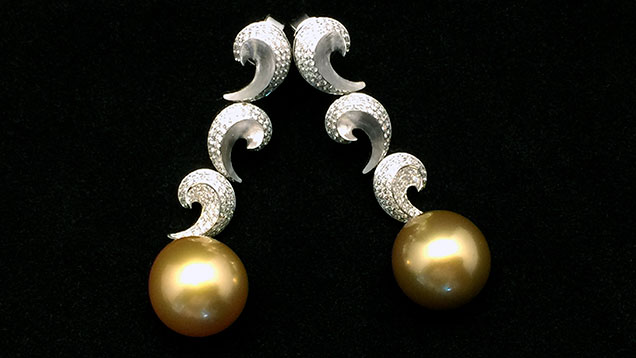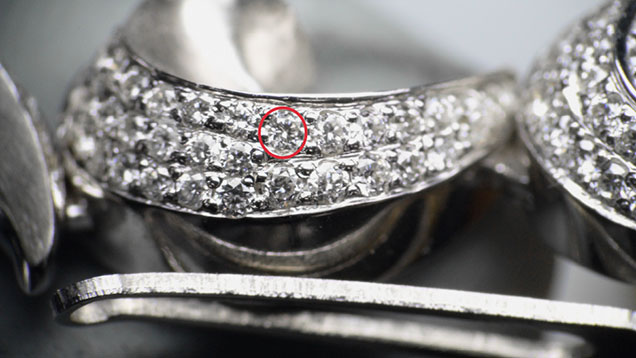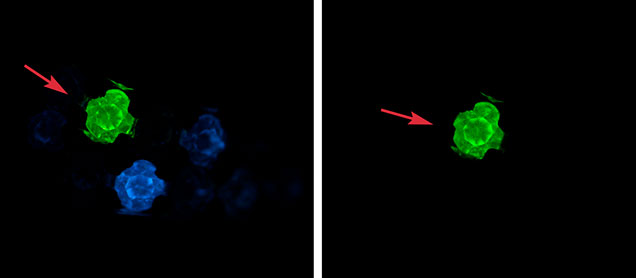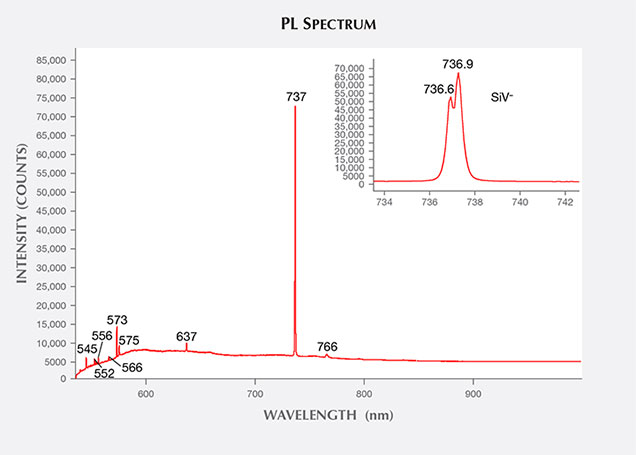A Melee-Sized CVD Synthetic Diamond in Pearl and Diamond Jewelry

Since 2012, CVD synthetic diamonds have been tested and identified by NGTC labs in China, typically in sizes above 0.20 ct. Since 2015, a large number of melee-size colorless and near-colorless synthetic diamonds have been detected in daily screenings at NGTC labs. Melee-size HPHT synthetics are accurately screened and identified at NGTC labs using new devices, some of them developed by NGTC. Melee-size CVD synthetic diamonds were reported by GIA’s Mumbai lab earlier this year (A. Krawitz, “GIA finds significant undisclosed synthetics,” Diamonds.net, March 7, 2017).
In March 2017, NGTC’s Beijing lab received 24 pieces of pearl and diamond jewelry (including the earrings seen in figure 1) from a domestic client, who claimed they were imported. Synthetic melee diamonds were identified in 14 of the 24 pieces. Most of the synthetic specimens were HPHT grown, but one was a melee-size CVD synthetic. The near-colorless CVD round brilliant circled in figure 2 was mounted in a pearl earring with about 200 natural melee diamonds. The estimated weight of this CVD melee is 0.01 ct. No obvious inclusions were found under 10× magnification.

Using NGTC’s GV5000 rapid screening instrument, the UV luminescence of a group of diamonds can be observed at the same time. Unlike colorless to near-colorless HPHT synthetic melee, which normally displays strong phosphorescence, the CVD phosphorescence reaction tends to be weak or inert. The GV5000 provides broadband UV excitation, in which colorless to near-colorless HPHT synthetics display strong greenish blue phosphorescence for about 3–60 seconds. Colorless to near-colorless CVD synthetics normally emit weak phosphorescence that lasts less than 3 seconds, while natural diamonds very rarely show phosphorescence with medium to weak intensity for 1 to 2 seconds. Also, the fluorescence color under the GV5000 is mostly blue-white for natural diamonds, strong greenish blue for HPHT synthetics, and bluish green or green or orange to red for CVD synthetics (colorless to near-colorless). We noticed the green fluorescence and weak green phosphorescence of this melee and conducted further testing. The green fluorescence and phosphorescence were more pronounced in the DiamondView (figure 3), but the layered growth structure of CVD synthetics was still not seen due to the specimen’s small size.

An absorption spectrum collected by micro-FTIR identified it as a type IIa synthetic diamond, with no N-related absorption. A weak 270 nm absorption band usually associated with synthetic origin was detected in the UV-Vis spectrum. With 532 nm laser excitation at liquid nitrogen temperature, the PL spectrum showed strong SiV– center double peaks at 736.6 and 736.9 nm (figure 4), indicating a CVD synthetic. A clear 978 nm emission also appeared in the PL spectrum with 785 nm laser excitation; the assignment of this emission is unknown. The green fluorescence was attributed to an H3 center, which means the specimen was HPHT-treated after growth.
This is the first time NGTC has identified a melee-size CVD synthetic diamond mounted alongside natural stones. This development is concerning, considering the challenge it would pose for gem laboratories. CVD synthetic screening requires more time and effort than HPHT synthetic screening, since the rapid methods of phosphorescence observation currently used would no longer be reliable. Therefore, new screening techniques and instruments are needed.




